

Anatomy Of Female Psyche


Anatomy Of Female Psyche
|
Several of hundreds similar Ancient Indian stone carvings belonging to the Mathura art, and unearthed by modern archaeologists in 19-20th century, are shown below. This art was called after Mathura city, the cultural and administrative center of the Kushan empire, where suchlike sculptures were created in large numbers for sending to other regions of India. Also artists of the Mathura school produced similar sculptures locally. All these figures were created in age of dominance of Buddhism in India, and for the purposes of decorating of sanctuaries of this religion. The sculptures portray Yakshi's — female representatives of the half-legendary people named Yaksha's who lived originally in solitary places of the Himalayas, and later were worshipped as deities in India. Please view these images with special attention to their female secondary sex characteristics. I mean the breasts and hips. (Click for larger image) |
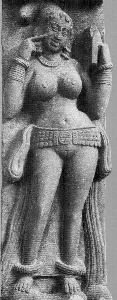 |
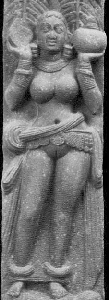 |
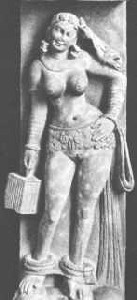 |
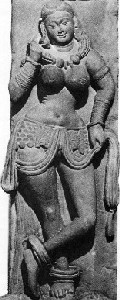 |

|
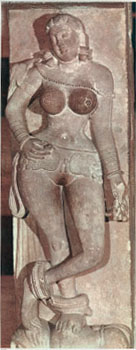
|
|
|
|
Everybody appreciates intuitively the roundness of female
forms, but only in the Buddhist beauties female hips and breasts reach their complete development.
There are also other images of that kind accessible on the Web:
One of the most humane religions, Buddhism has been based on ascetism that originally signifies natural life free from the most of artificial things and problems.
According to legends ascetics lived in their forest hermitages (ashram) in couples (mithuna). So I can adduce web versions of the famous Indian epos Ramayana, the very touching story of female loyal love Savitri and Satyavan, the myth on the god of ascetics and his consort Sati & Shiva who lived in the Himalayas — the homeland of Yakshas, and finally the legend of Upagupta: The Buddhist Monk portraying a Mathura sculptor carving sculpture of a beautiful female ascetic.Besides, in Indian mythology in Indian mythology occurs a very common motif of the interruption of an ascetic feat (tapas) with a sexual intercourse by a beautiful women. Also it's significant that Buddhist esoteric tradition of tantra is known to combine ascetic and sexual practices.
Later historical sources picture Ancient Indian ascetics as celibates, sex as vulgarly sensual, and gender relations as
problematic. Except that art we can see similar female images only in some works of fantasy art which probably are the reflection of some paragon imprinted in the common human hereditary memory,
and never in the reality or in realistic art.
In addition, Ancient Indian literature carries many short mentions and picturesque descriptions of wide-hipped full-breasted women, which certainly might not be invented.
And female wide hips and full breasts of the Buddhist beauties are not mere attrating features of theirs, but very important for proper performance of the main purpose of female organism: reproduction. Really, it is common knownledge that female pelvis is broader than male one and has a larger space in the middle to allow a baby to pass through during childbirth.
It is also known that forensic anatomists can determine if a
dead woman had borne child during her life owing to a
small space, which appears regularly between two female front pelvic bones (see image of female skeleton) after the first childbirth. The more childbirths, the larger space. Perhaps, that's why
a next childbirth is
easier than the previous one for a woman.
Besides, a newborn's first cry seems me to be a result of shock from
passing through narrow birth channel.
See the following resources related to the general problems of breastfeeding for details.
Another essential feature of the Buddhist beauties, confirming their reality is that, in a shocking way they evince not a bit of the unnatural feeling of shame about their natural appearance so common in regular women.
According to Ancient Indian literature, the ascetic females wore simple bark-dresses, which did not adorn their bodies but concealed their own beauty instead: Her bark-dress conceals the splendid orbs Of her breasts, and reveals not their beauty And brilliance; it seems that a sallow leaf Has barely imprisoned a bud in the morning. Kalidasa, The Recognition of Sakuntala
Even thir decorative girdles surrounding their hips only, served neither for constricting their waists nor for adorning their bodies. Those girdles were quite functional. According to the poem Cloud Messenger by Kalidasa their girdles jingling to their footsteps. In other words, their girdles as well as their bangles served as rattles at dancing.
But what must such shapely and comely women be ashamed of ?! It is just the women lacking similar forms who experience certain discomfort and need to shield their bosoms and groins somehow, being naked. Even when the woman is regarded as the Goddess of Beauty!
Usually it looks as if they screen something sacrosanct from vulgar stares, which can desecrate that. Botticelli's Venus looks like protecting her body from the cool wind. However, the comparison with the Buddhist carvings reveals clearly that all they try to conceal the banality of their forms. No exception even for beloved men, so "the rites in honor of the Love God" are held at the lights turned out as a rule.
It's clear that the overappreciation of female beauty exists just because men's eyes are
carefully preserved from blinding brilliance of female treasures.
...were both naked, ... and were not ashamed (Genesis 2:25) and the shame of nudity and the labor pain come to people practically at once. So, at the moment of the Fall Both of their eyes were opened, and they knew that they were naked (Genesis 3:7) and just as a curse for that women
...in sorrow ... bring forth children
(Genesis
3:16)
Furthermore, women are known to avoid revealing their
true ages. An apparent reason is, once again, in their underdeveloped forms
that lifelong stay teenage.
In fine arts that pose termed contrapposto is very wide-spread in female images. |
 |
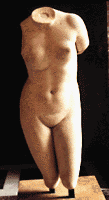 |
 |
 |
 |
 |
 |
 |
 |
 |
 |
 |
 |
 |
 |
|
Women as if wriggle out of the possible exposure and give themselves airs and graces in this way. Another "popular" artifice to fake proper female forms consists in bearing legs in the shape of the letter Y or K. |
 |
 |

|  |
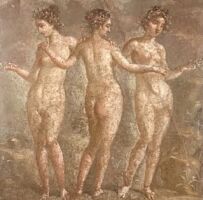 |
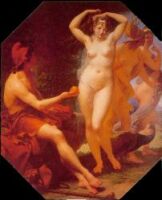 |
 |
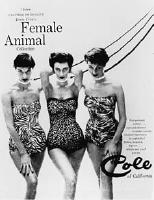 |

|  |
 |
 |
 |
 |
 |
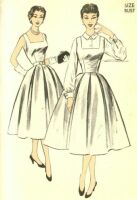 |
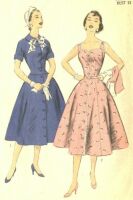 |
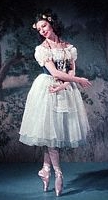 |
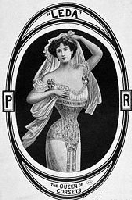 |
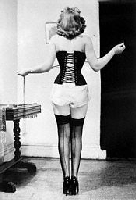 |
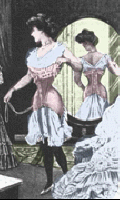 |
 |
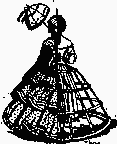 |
 |
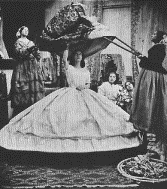 |
|
So for the same aim of constricting their waists present-day
ladies go on severe diets and take exercises in hope to free
from stomach fat thought to be superfluous. Excessive aspiration
of this kind has resulted in some extreme cases of fatal anorexia. Feminists blame these cases of women's madness on
men's lust for thin female bodies. Even so, it is also true that
sometimes men like plump women, certainly for the same
illusion of broad pelvis that the fat makes.
Besides that, in present the stomach fat may be excised, sometimes along with lower ribs, which impede some women rich in bones to feel attractive. Also surgeons can fill a woman's lean breasts with silicone and her heart with pride upon her affected bosoms.
At that note that, unlike the faultfinding and demanding pretenders around us, the genuine shamefree women represented by those stone carvings were Buddhist ascetics, who, however, left a prosperous wonderland created by ascetics after themselves.
All that means that the heavenly beauties who none of us supposed to be ever there, but whose image everyone kept in his heart, did step on earth. In point of fact, they were no heavenly beauties but mere true women. However, the sizes of female breasts and hips matter not only for reproductive function of female organism. The development of female secondary sex characteristics are known to be induced by the basic female sexual hormones termed estrogens, which, besides, benefit general female physical and mental health. Thus, inadequate development of female forms testifies surely the lack of these hormones. In other words regular women's underdeveloped forms are not mere their anatomic features or outward qualities, but undeniable visual symptoms of some serious hormonal disturbance. Usually we can't notice these crying signs of disease just because all women bear them. It is one of the cases when something regular is wrongly considered normal. Only the comparison with the Ancient Indian Buddhist carvings reveals this mistake. No wonder now that the hormonal disorders of mass character, such as premenstrual syndrome (PMS), postpartum depression and menopause are there spread among women. Also numerous problems of women's health in general are apparently due to the just distinguished hormonal disturbance. Besides, well-known breast cancer, one of the most common types of human cancer in general, should be indicated as the extreme exhibition of some disturbance in female breasts. Also it's no wonder that medicals fail to comprehend the nature of those female disorders — they stay ignorant of the true norm of female health.
Thus, the little known mute sculptures tell us way more of female nature than women around us who often overuse their power of speech. Even so, I don't want you to think that the secret of true femininity was kept in the museums. I have used those sculptures for the starting point of my hypertext article as they present tangible and literally steady proofs of the regular women's physical deficiency, in addition pretty ones. In reality my ideas have occurred to me by another way. In any event, now we can not only claim regular women to be ill but we can also understand what the common women's disease is, or in other entire being a woman is. In other words, we can answer the question What Does It Mean To Be a Woman?

|